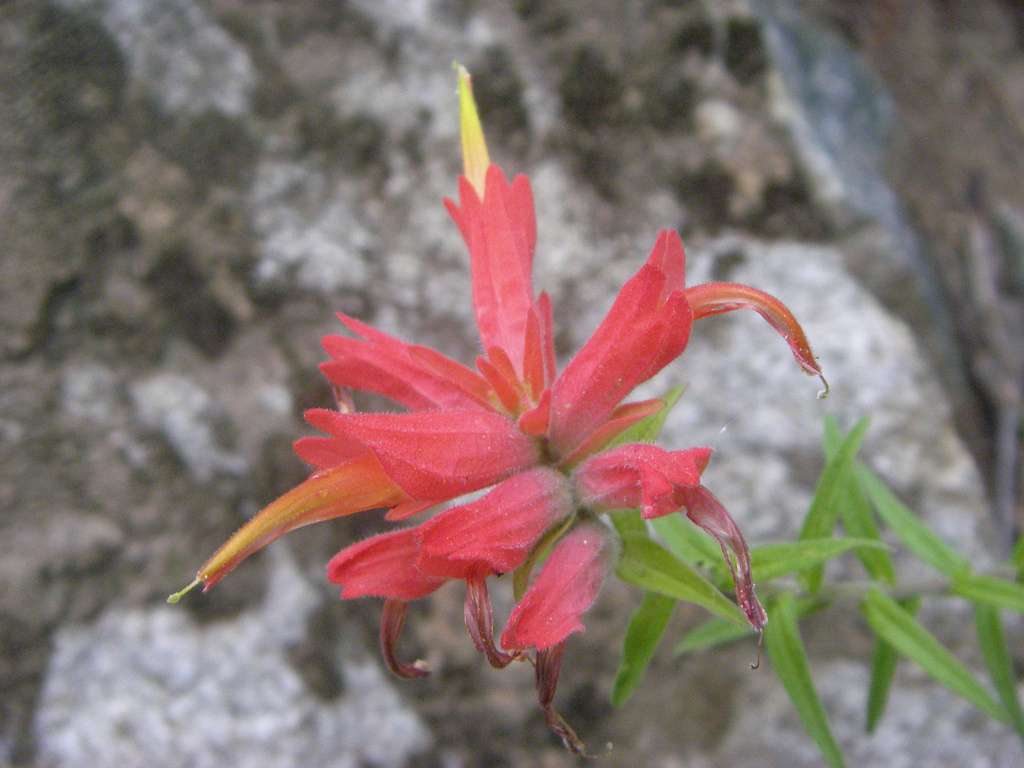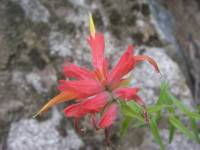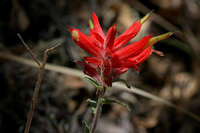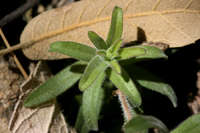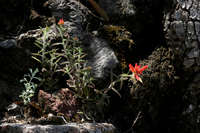Duration: Perennial
Nativity: Native
Lifeform: Forb/Herb
General: Asending, branched perennial with several slender stems 10-50 cm tall, with spreading pilose hairs to somewhat lanate.
Leaves: Lax, linear to oblong, entire, glabrous on upper surface, tomentose beneath, 1.5-5 mm wide, 1.5-4 cm long, often subtending small fascicles of leaves 3-6 mm long.
Flowers: Broad spike, densely villous, floral bracts obovate, broader than leaves, 1.5-2 cm long, red-tipped at apex, green below; calyx 20-26 mm long, cleft about to middle in front, about one-half as deeply behind, lobes broadly rounded, truncate, tube yellow with scarlet tips, villous throughout but glandular on upper part; corolla 25-40 mm long, upper hood about equaling tub, margins glabrous and red, densely puberulent near tip.
Fruits: Loculicidal capsules broadly ovoid, 6-9 mm long.
Ecology: Found on rocky slopes often under oaks and in canyons from 5,000-7,000 ft (1524-2134 m); flowers April-October.
Notes: Some characteristics to pay attention to are the lax leaves that are tomentose below and glabrous above and the stems are densely tomentose with stiff hairs.
Ethnobotany: Unknown, but other species in the genera have uses.
Etymology: Castilleja is for the Spanish botanist Domingo Castillejo (1744-1793), while tenuiflora means having fine or delicate flowers.
Synonyms: Castilleja laxa
Editor: SBuckley, 2010


